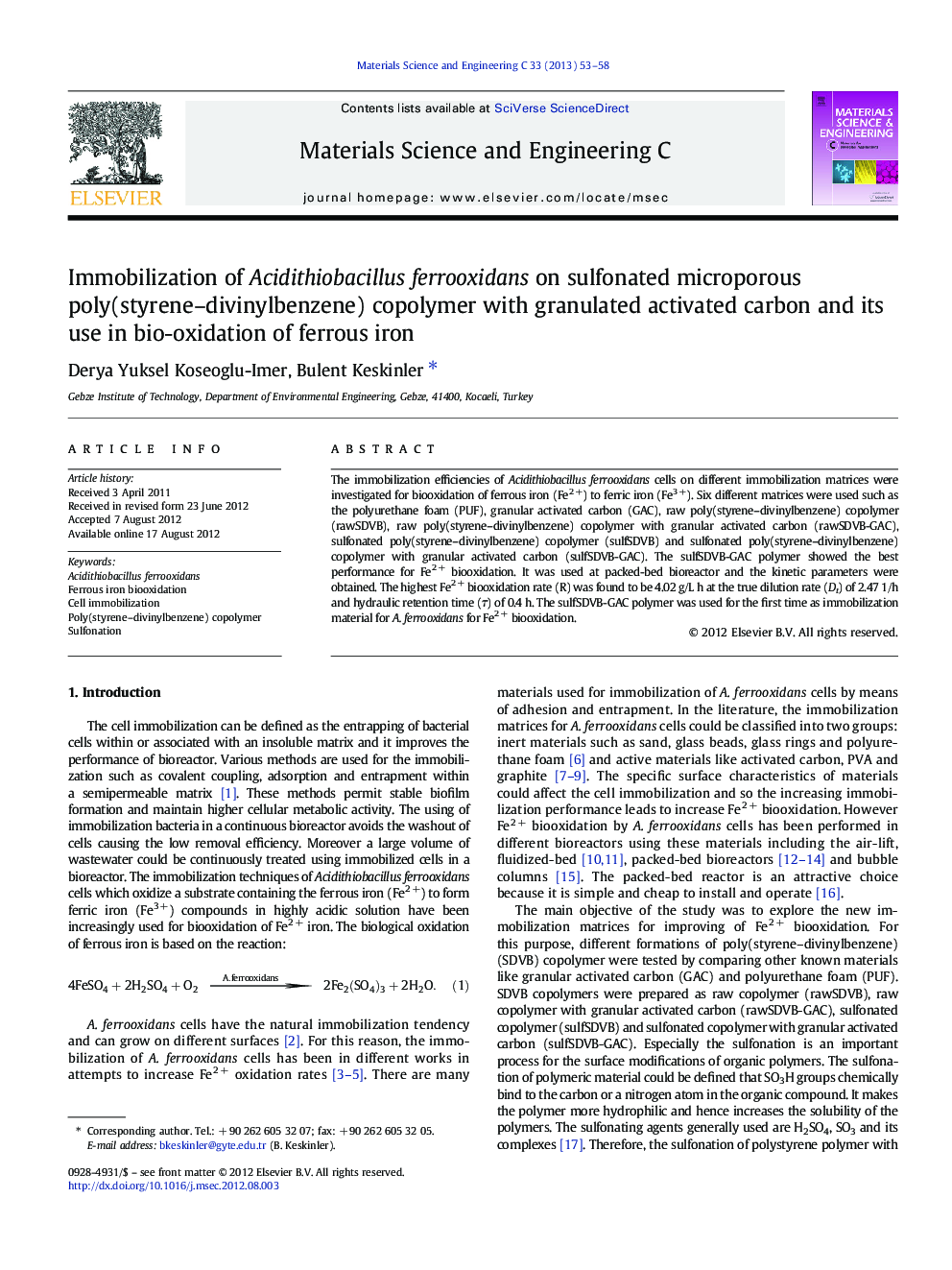| کد مقاله | کد نشریه | سال انتشار | مقاله انگلیسی | نسخه تمام متن |
|---|---|---|---|---|
| 1429039 | 987163 | 2013 | 6 صفحه PDF | دانلود رایگان |

The immobilization efficiencies of Acidithiobacillus ferrooxidans cells on different immobilization matrices were investigated for biooxidation of ferrous iron (Fe2 +) to ferric iron (Fe3 +). Six different matrices were used such as the polyurethane foam (PUF), granular activated carbon (GAC), raw poly(styrene–divinylbenzene) copolymer (rawSDVB), raw poly(styrene–divinylbenzene) copolymer with granular activated carbon (rawSDVB-GAC), sulfonated poly(styrene–divinylbenzene) copolymer (sulfSDVB) and sulfonated poly(styrene–divinylbenzene) copolymer with granular activated carbon (sulfSDVB-GAC). The sulfSDVB-GAC polymer showed the best performance for Fe2 + biooxidation. It was used at packed-bed bioreactor and the kinetic parameters were obtained. The highest Fe2 + biooxidation rate (R) was found to be 4.02 g/L h at the true dilution rate (Dt) of 2.47 1/h and hydraulic retention time (τ) of 0.4 h. The sulfSDVB-GAC polymer was used for the first time as immobilization material for A. ferrooxidans for Fe2 + biooxidation.
► The immobilization of Acidithiobacillus ferrooxidans cells on different immobilization matrices and the biooxidation of ferrous iron (Fe2+) to ferric iron (Fe3+) in a packed-bed bioreactor were studied.
► The sulfSDVB-GAC polymer was used for the first time as immobilization material for A. ferrooxidans for Fe2+ biooxidation.
► The highest Fe2+ biooxidation rate (R) was found as 4.02 g/Lh at the true dilution rate (Dt) of 2.47 1/h and hydraulic retention time (τ) of 0.4 h.
Journal: Materials Science and Engineering: C - Volume 33, Issue 1, 1 January 2013, Pages 53–58